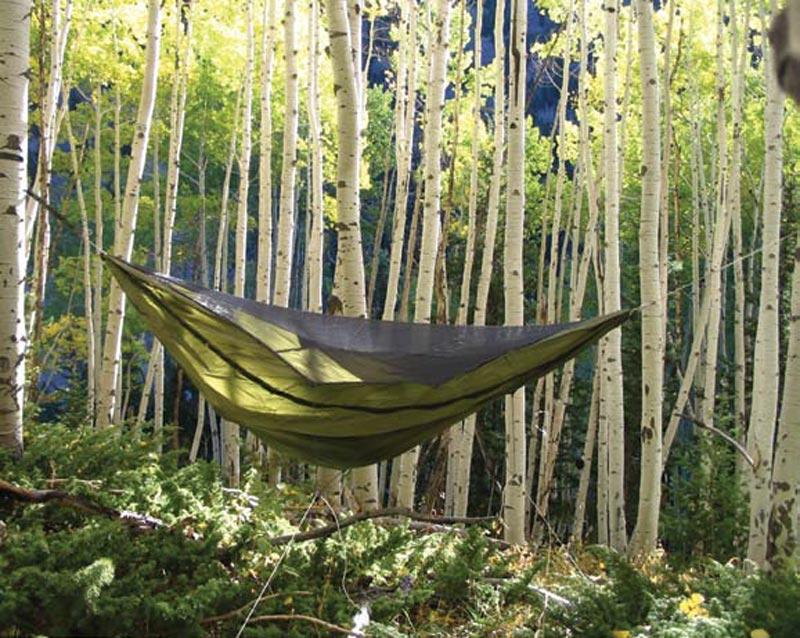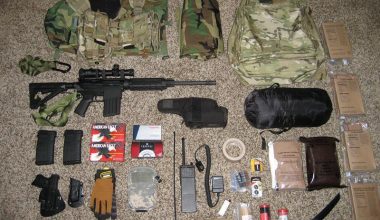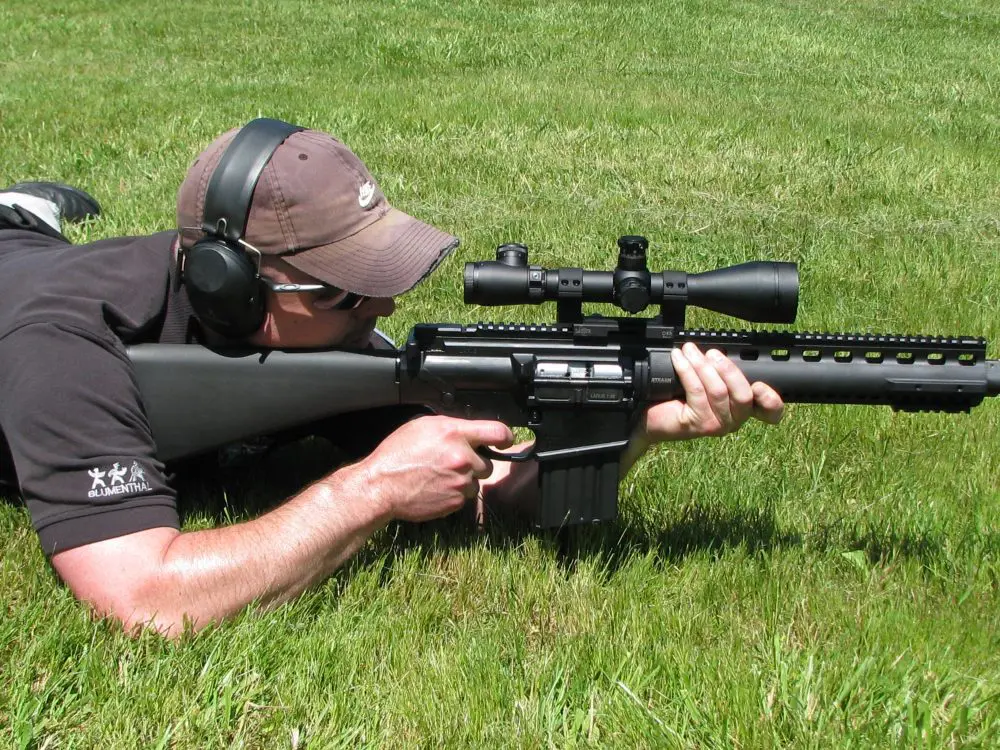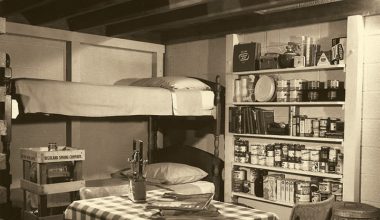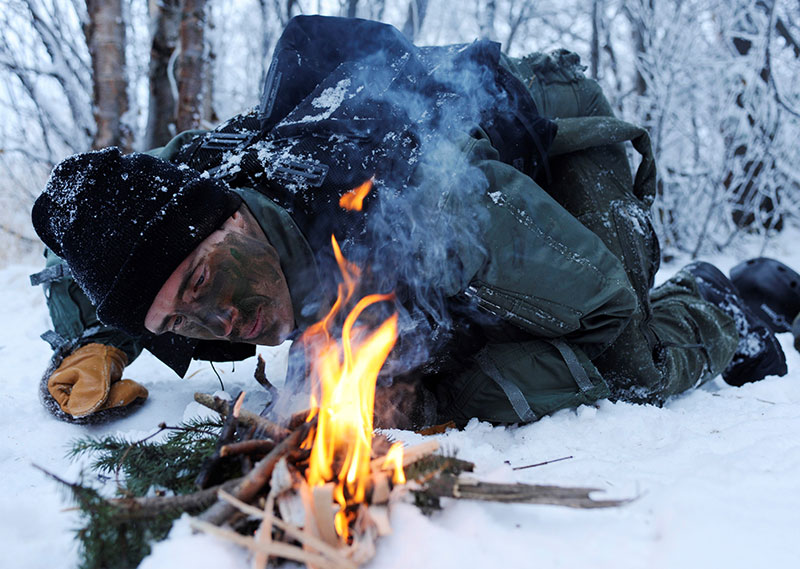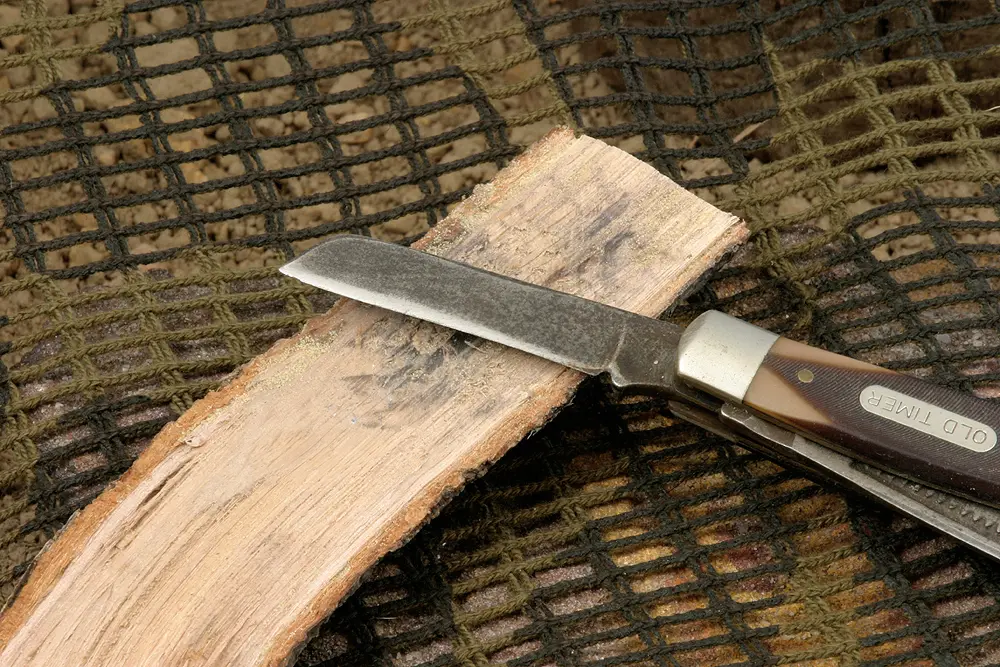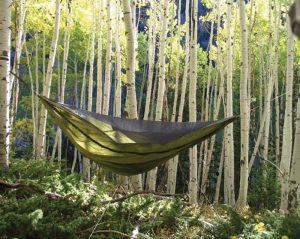
Tents certainly have their uses, but as my outdoor pursuits have evolved, so has my choice in shelters. In September 2011, I attended an event at Jeff Randall’s farm. I was not surprised to see that ten out of 14 participants were sleeping in hammocks.
Hammocks have a long history worldwide. The word hammock comes from the Arawakan language and means “fish net.” In the United States, the hammock has traditionally been seen as a symbol of summer and leisure. Many native cultures throughout the world continue to use hammocks as a means of sleeping up off the ground for protection from snakes and insects. Christopher Columbus brought hammocks back to Spain after visiting the Bahamas.
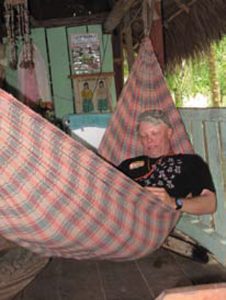
In the late 1500s, the Royal Navy adopted hammocks for sleeping aboard ships. One obvious advantage of a hammock aboard a ship is that as the ship rocks on rough seas, the hammock shifts with the boat and sailors avoid being thrown out of bunks. A hammock takes up a lot less space than a bunk and can be quickly and compactly stowed. The United States Army adopted a hammock complete with rain fly and mosquito netting during World War II in tropical places like Burma. The M1966 Jungle Hammock saw service in Vietnam, although it was made with a waterproof bottom and sweaty clothes did not dry out overnight. Gear preferences are very individual and situation dependent. There are advantages and disadvantages to hammocks, and they might not be good for every person or in every situation. I’ll start with a few disadvantages.
There are places where there are no trees from which to hang a hammock. Although a makeshift stand can be fashioned with two sturdy poles and guy lines, it might be more trouble to hang a hammock than pitch a tent. Weight limits might be a problem for the “big boned” among us, and finding a hammock to fit very tall individuals might take some searching.
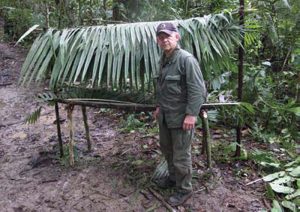
Most hammocks have little space within them for extra gear, although there are ways around that problem.
Without proper setup and use, a hammock could be colder than other shelter types because of exposure to moving air on all sides.
Some people also have great difficulty sleeping on their backs. It is possible to sleep on your side in a hammock, but not as easily as in a tent.
The advantages of hammocks for survival are numerous. At the end of a day of travel, if you’ve carried a one-pound hammock, you do not have to spend hours and calories building a shelter.
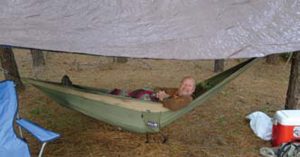
Finding a site to sleep involves finding two trees. You do not have to worry about finding level ground free of debris and you can make use of terrain that would otherwise be unusable for shelter. If you absolutely cannot find two trees, the hammock can be set up as a tent. Being off the ground has innumerable advantages, chief among them being protection from insects and snakes. In addition to being quick and easy to set up, most hammocks weigh about a pound and can be compactly stowed in a bug-out bag. Compare that to tents, which are all heavier, bulkier and offer less utility in terms of site selection in most locales.
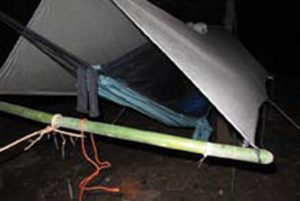
One of the tents we brought to the Amazon jungle in 2011 was partially eaten by termites. But even without termite holes in the bottom, I have yet to find a tent that is truly waterproof in a downpour. Remember that if you are carrying more weight than you need to, you are burning more calories than you need to. If you spend two hours building a shelter at the end of a day, you are wasting both time and calories. You might not need to worry about that while camping, but in survival situations every little bit helps.
When I was shopping for a hammock, there were several features I was looking for. I wanted something relatively inexpensive because I was not sure I would like sleeping in a hammock and thus didn’t want to be out a lot of money. I wanted a hammock with a built-in mosquito net. The Byer Moskito Traveler fulfilled that requirement and, at less than $40, the price was right.
From my experience with the Moskito, I learned to sleep diagonally across the hammock rather than straight down the center. Sleeping diagonally gives you a much flatter sleeping surface as opposed to the taco-shaped surface you get sleeping down the center. I used a Gossamer Gear Thinlite ¼-inch pad cut down to size to fit me. While adding only four ounces to my pack weight, the pad solved the problem of convection cooling inherent in hammocks. Add a space blanket and you have solved the heat loss problem.
I prefer to pack gear with multiple uses, so I use a military poncho as my rain fly. A few rainy nights in the hammock confirmed that my multi-use concept is the right approach. I found one major drawback to the Moskito—no matter how I set it up, there was contact between the mosquito net and my skin.
My current hammock, a Warbonnet Outdoors Blackbird, solves the problem of skin contact with the mesh and adds many other features. There is an area specially made for your feet. You can store extra gear in this foot box or on a built-in shelf. I am able to set up and adjust the Blackbird in under a minute. My hammock weighs 20 ounces including a storage sleeve and carabiners.
Other very popular hammocks are made by Eagles Nest Outfitters. I have no personal experience with these hammocks, but people who have them seem enthusiastic. While they are less expensive than the offerings from Warbonnet Outdoors, I could not find a hammock offered by Eagles Nest Outfitters with a built-in mosquito net.
I keep a hammock in the trunk of my car. I travel a lot and on a nice night would rather hang a hammock in a state park than sleep in a hotel. Try it. You might like it.
